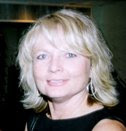The marriage of convenience business has gone on forever because there are always reasons other than love that make people bond in legal matrimony. For young Eastern European women, there are limited choices with possible entrapments in human trafficking lurking at every hope-inducing job opportunity thus holding them hostage to taking chances. The black market ring for citizenship offers Lorna a misguided opportunity at securing a loan to open a snack bar with her boyfriend, Sokol, who also travels outside their home country borders for similar deals in fast buck moneymaking.
What Lorna doesn't count on is her influence on Claudy and as he becomes the non violent, decent but unemployed young man coming out of his heroin addicted persona, her conscience tugs at her emotions as she tries to alter the original plan for Claudy to O.D. Another marriage to a Russian mobster paying for Belgian citizenship is already being arranged and Lorna tries to obtain a divorce rather than follow Fabio's orders. Just as the loosened lynchpin throws off the cogwheel's balance, so does the decisions Lorna makes in trying to save Claudy's life and in the process derails her best laid plans and puts her own life in jeopardy.
The film is shot in 35mm and it shows, especially in the night scenes where Lorna frantically tries to make deals all the while becoming part of the deal with the next customer. The main character is a composite of the young women coming from a big European city that embodies all sorts of hope often turning into something unimaginable happening to them. Arta Dobroshi, the actress chosen to play Lorna brings these qualities together beautifully. Finding the money Claudy gave to Lorna for safekeeping and her attempt to return it to his mother becomes a heart-wrenching meeting between two women who otherwise would not have exchanged a single word despite their marital ties. It was another attempted money exchange, but this time not accepted. Again, the tone is set, yet there's a sensual, innocent quality added to the unfolding dramatic darkness up until the end.
The Dardenne brothers, Jean-Pierre and Luc Dardenne, have been making documentary and narrative films since the 1970s but it was not until twenty years later that their films won a major prize at Cannes and since then their films have played at the Cannes main competition. This latest film, LORNA'S SILENCE (LE SILENCE DE LORNA), won Best Screenplay at the 2008 Cannes festival and will open in New York (Lincoln Plaza and Cinema Village) and Los Angeles on Friday, July 31 with a national roll out to follow.

